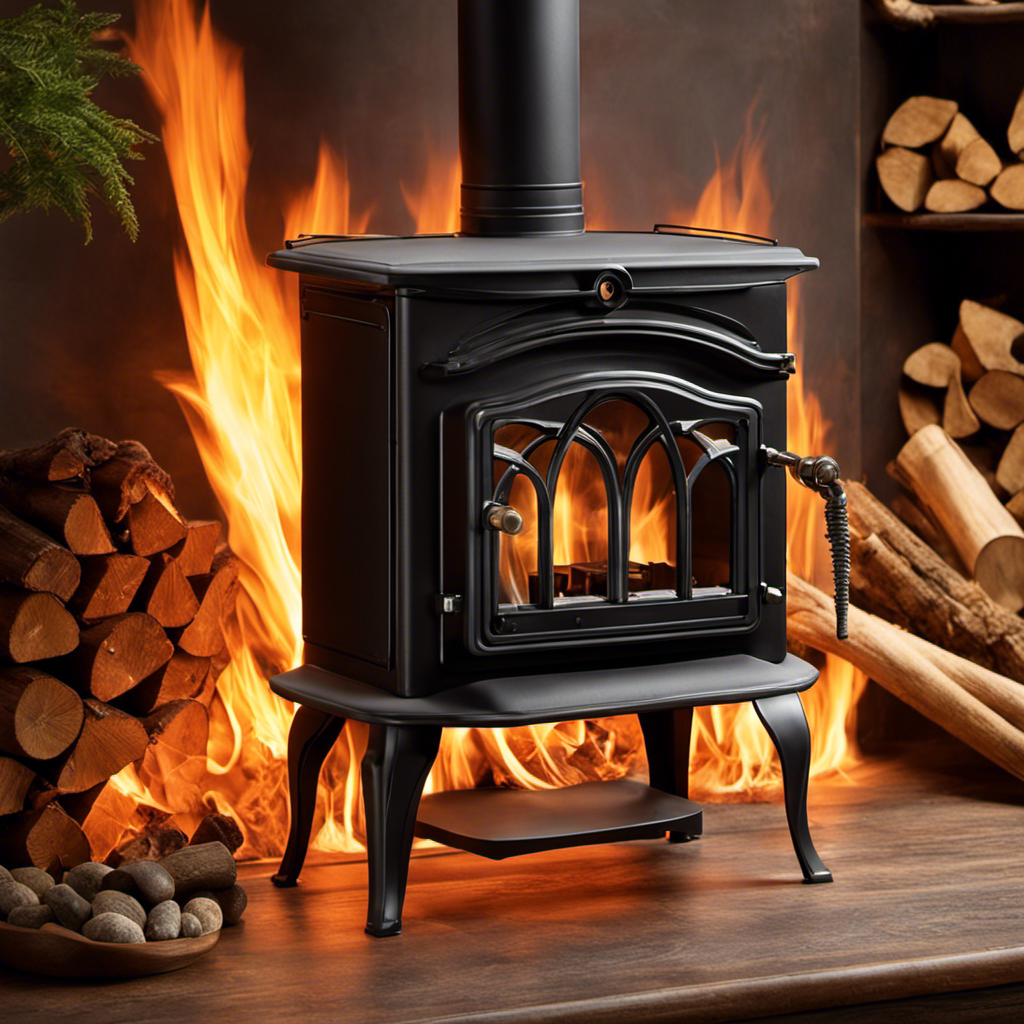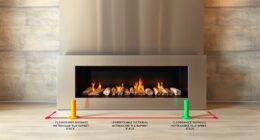As someone who has considerable experience with wood stoves, I’ve frequently found myself wondering: what’s the perfect temperature for my wood stove to operate at? It’s important to underline that finding this optimal temperature range is crucial for reaching maximum efficiency.
In this article, I’ll delve into the impact of high temperatures on efficiency, the importance of safe operating temperatures, and the environmental consequences of excessive heat. Plus, I’ll share some nifty tips and techniques to help you control and monitor your wood stove’s temperature like a pro.
Get ready to stoke the fire and learn!
Key Takeaways
- The optimal temperature range for wood stove performance is between 400 and 600 degrees Fahrenheit.
- Maintaining this temperature range is important for efficiency and effectiveness.
- High temperatures ensure complete combustion of the wood, resulting in cleaner burning.
- Excessive heat can pose safety risks and contribute to air pollution.
The Optimal Temperature Range for Wood Stove Performance
I find that the optimal temperature range for wood stove performance is between 400 and 600 degrees Fahrenheit. Maintaining this temperature range has a significant impact on the overall efficiency and effectiveness of the wood stove.
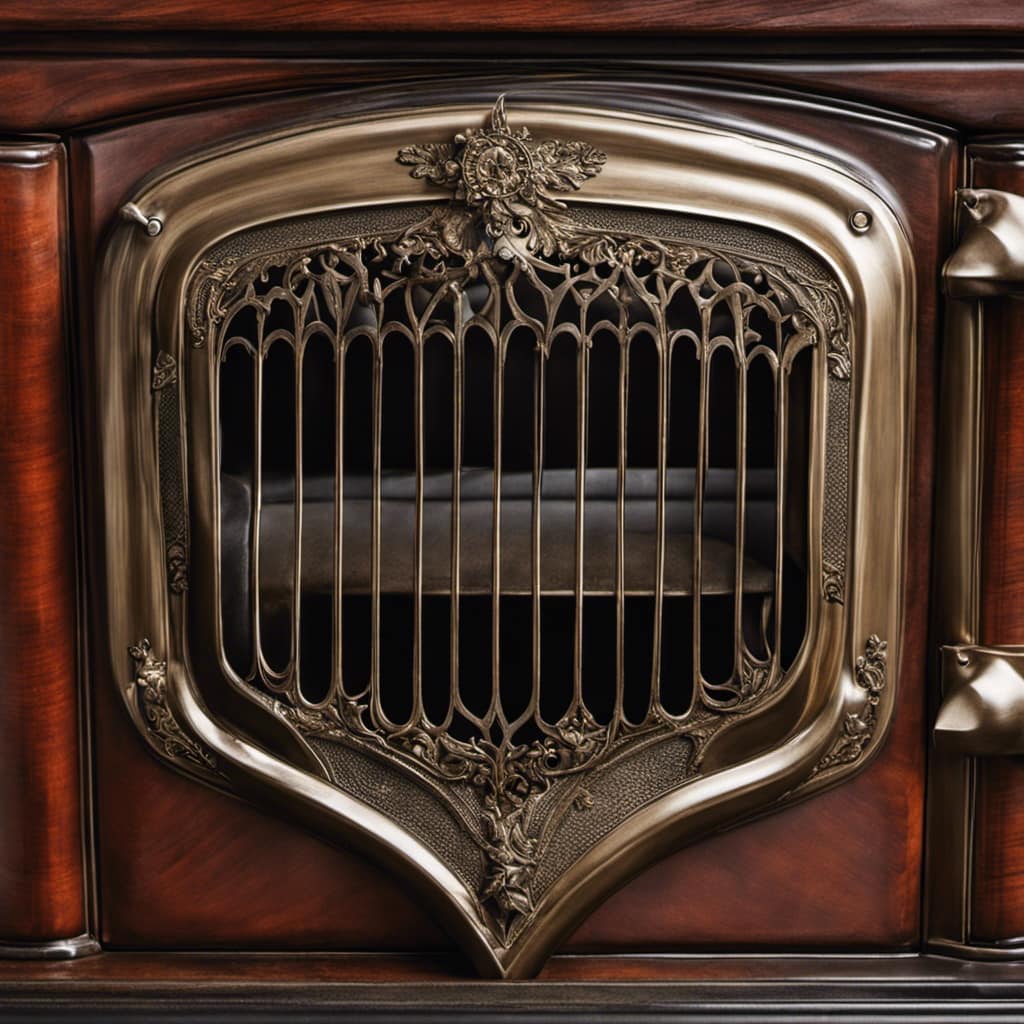
One key factor that affects the stove’s temperature is insulation. Proper insulation ensures that heat is retained within the stove, allowing it to reach and maintain the desired temperature range. Insufficient insulation can lead to heat loss, resulting in lower temperatures and reduced efficiency.
Additionally, proper maintenance plays a crucial role in achieving and maintaining the optimal temperature range. Regular cleaning of the stove, including the removal of ash and debris, ensures that air can circulate freely and that the stove can reach its maximum temperature.
The benefits of proper maintenance include improved combustion, reduced smoke emissions, and increased heat output, all contributing to a more efficient and enjoyable wood stove experience.
Understanding the Impact of High Temperatures on Efficiency
As a homeowner, I’ve noticed that when my wood stove reaches higher temperatures, it tends to operate more efficiently. This is because high temperatures have a significant impact on the performance and heat output of a wood stove. When the stove reaches its optimal operating temperature, it ensures complete combustion of the wood, resulting in cleaner and more efficient burning. The heat generated is also more evenly distributed throughout the space. To better understand the effects of high temperatures, let’s take a look at the table below:
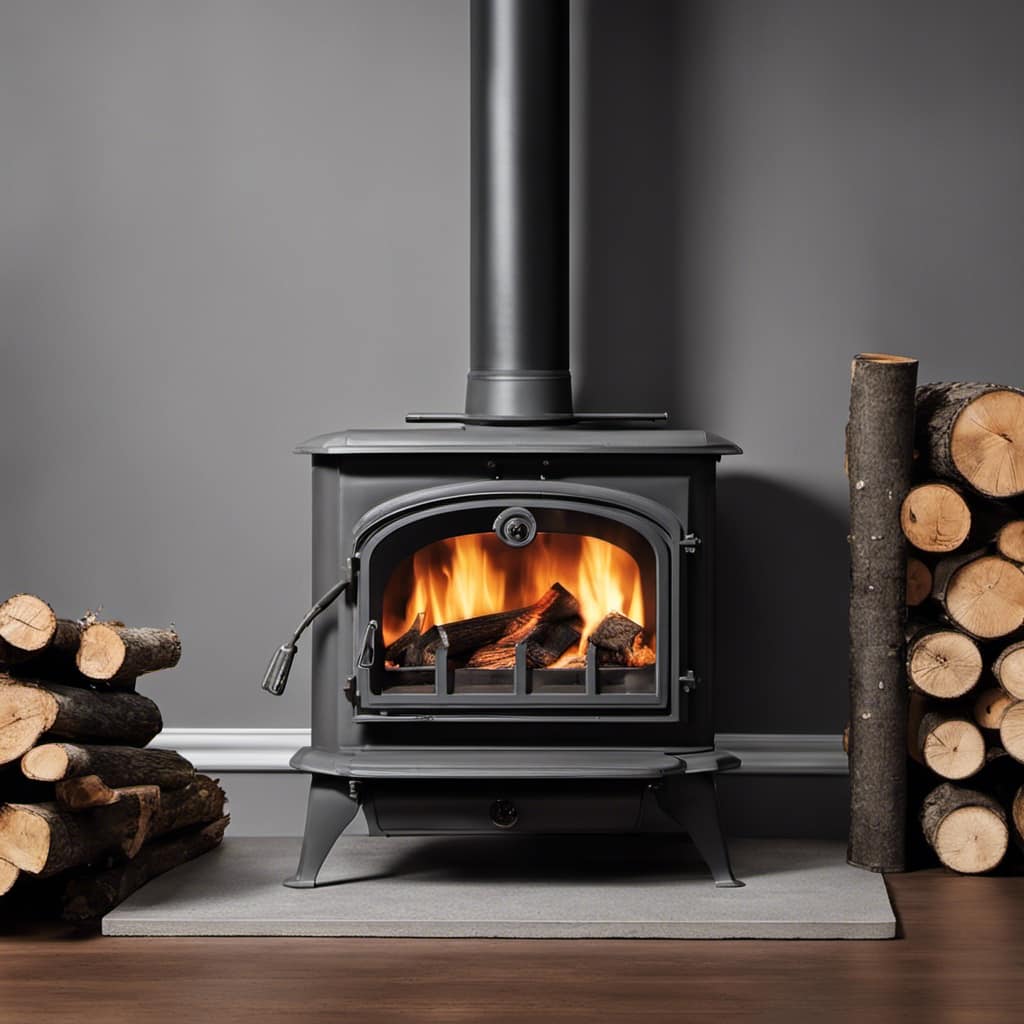
| Effects of High Temperatures | Heat Management Techniques |
|---|---|
| Increased efficiency | Use a damper to control airflow and reduce heat loss |
| Cleaner combustion | Regularly clean and maintain the stove to prevent creosote buildup |
| Better heat distribution | Install a fan or heat exchanger to circulate warm air |
Ensuring Safe Operating Temperatures for Your Wood Stove
To ensure safe operation, it’s crucial to regularly monitor and maintain the temperature of my wood stove. Wood stoves can reach high temperatures, so it’s important to keep them within a safe temperature range. The safe temperature range for a wood stove typically falls between 300 and 600 degrees Fahrenheit.
If the temperature exceeds this range, it can pose a risk of overheating and potentially cause a fire. To maintain the safe temperature range, regular maintenance is essential. This includes cleaning the stove regularly to remove any buildup of soot or creosote, inspecting the stove for any signs of damage or wear, and ensuring proper ventilation to prevent excessive heat buildup.
The Environmental Consequences of Excessive Heat in Wood Stoves
Excessive heat from wood stoves can contribute to air pollution and negatively impact the environment. When wood stoves burn at extremely high temperatures, they release more pollutants into the air, including harmful gases and particulate matter. These pollutants can have serious consequences for air quality and human health.
To better understand the environmental impact of excessive heat in wood stoves, let’s take a look at the table below:
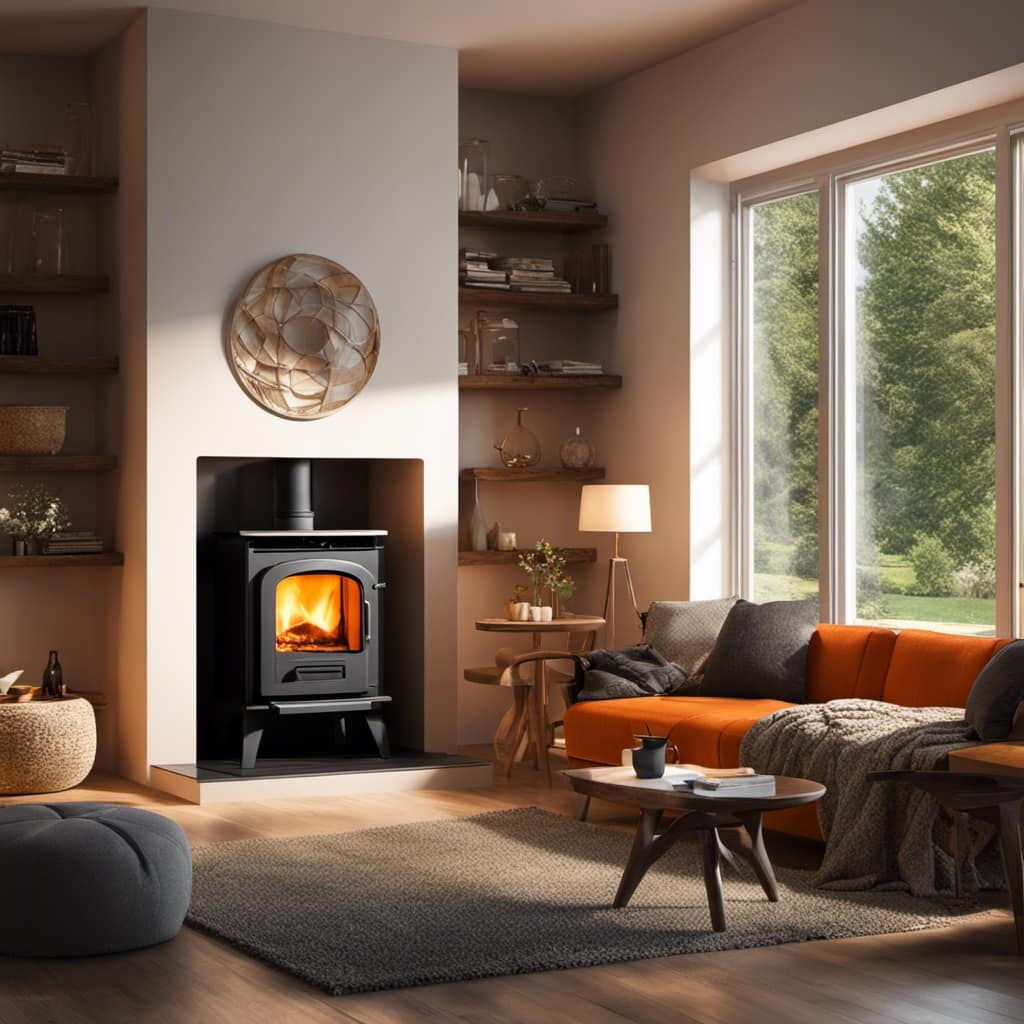
| Environmental Impact | Air Pollution |
|---|---|
| Increased emission of harmful gases | Carbon monoxide, nitrogen oxides, and sulfur oxides |
| Higher release of particulate matter | Fine particles that can penetrate deep into lungs |
As you can see, the excessive heat generated by wood stoves can lead to increased emissions of carbon monoxide, nitrogen oxides, sulfur oxides, and fine particles. These pollutants can contribute to smog formation, respiratory issues, and even climate change.
To minimize the environmental impact of wood stoves, it is important to regulate the temperature and ensure proper combustion. This can be achieved by using dry and well-seasoned wood, maintaining proper airflow, and regularly cleaning and maintaining the stove. By taking these steps, we can enjoy the warmth of a wood stove while minimizing its negative effects on the environment.
Is the Temperature of the Wood Stove Pipe Related to the Ideal Heat of the Wood Stove?
Yes, the wood stove pipe temperature is related to the ideal heat of the wood stove. The higher the wood stove pipe temperature, the more efficiently the stove is operating. It helps to ensure proper draft and combustion, resulting in a better, more consistent heat output.
Tips and Techniques for Controlling and Monitoring Wood Stove Temperatures
I find it helpful to adjust the damper and monitor the fire closely to maintain a consistent and manageable temperature in my wood stove. Controlling the heat in a wood stove is essential for efficient and safe operation. Here are some tips and techniques I’ve learned through my experience:
Use the damper to regulate the airflow: Opening the damper allows more oxygen into the fire, increasing the temperature, while closing it restricts the airflow and lowers the temperature.
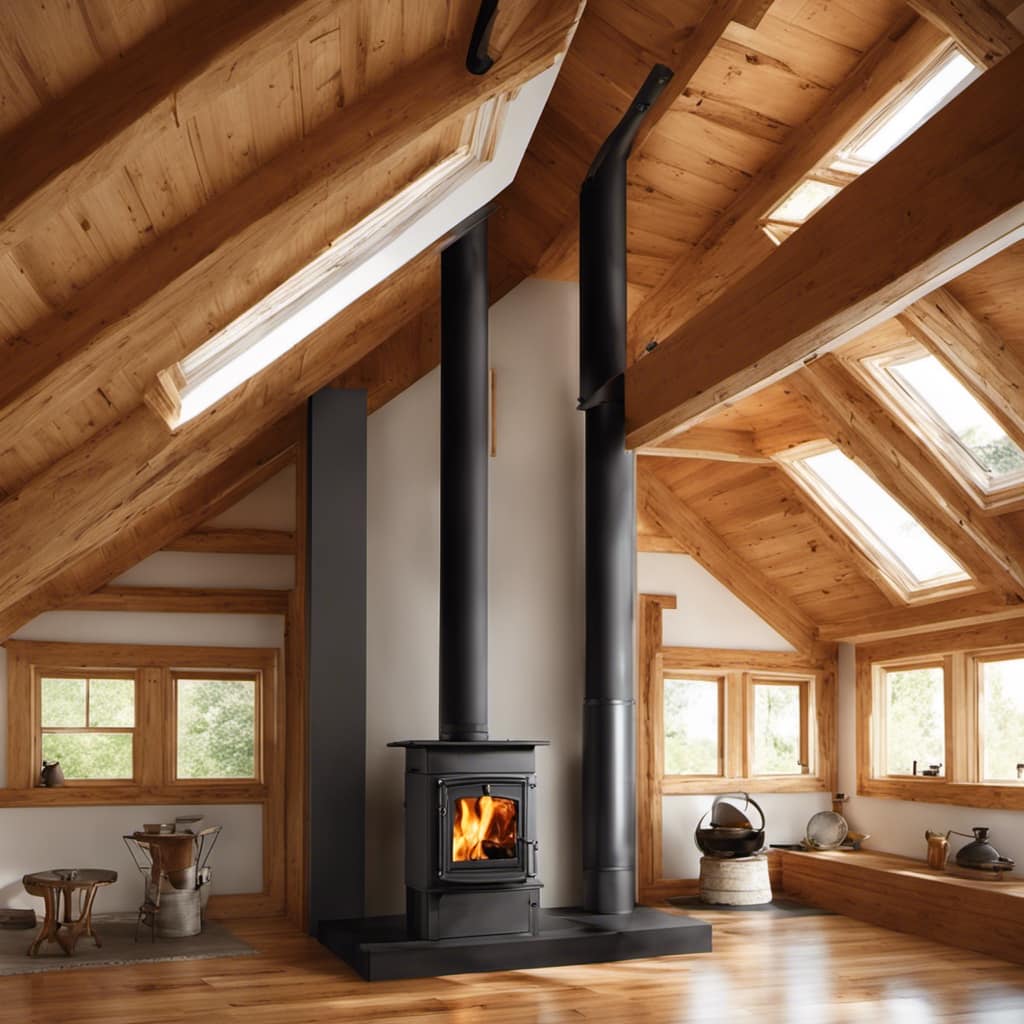
Adjust the fuel load: Adding more wood can raise the temperature, while reducing the amount of fuel or allowing it to burn down can lower it.
Use a stove thermometer: Installing a thermometer on the stovepipe or inside the stove helps monitor the temperature and make necessary adjustments.
Consider the size of the fire: A smaller fire produces less heat, while a larger fire generates more heat. Adjust the size of the fire according to your heating needs.
Frequently Asked Questions
How Do I Know if My Wood Stove Is Reaching the Optimal Temperature Range for Performance?
I can determine if my wood stove is reaching the optimal temperature range for safe operating temperatures and optimal performance by monitoring the heat output and checking that it is within the manufacturer’s recommended range.
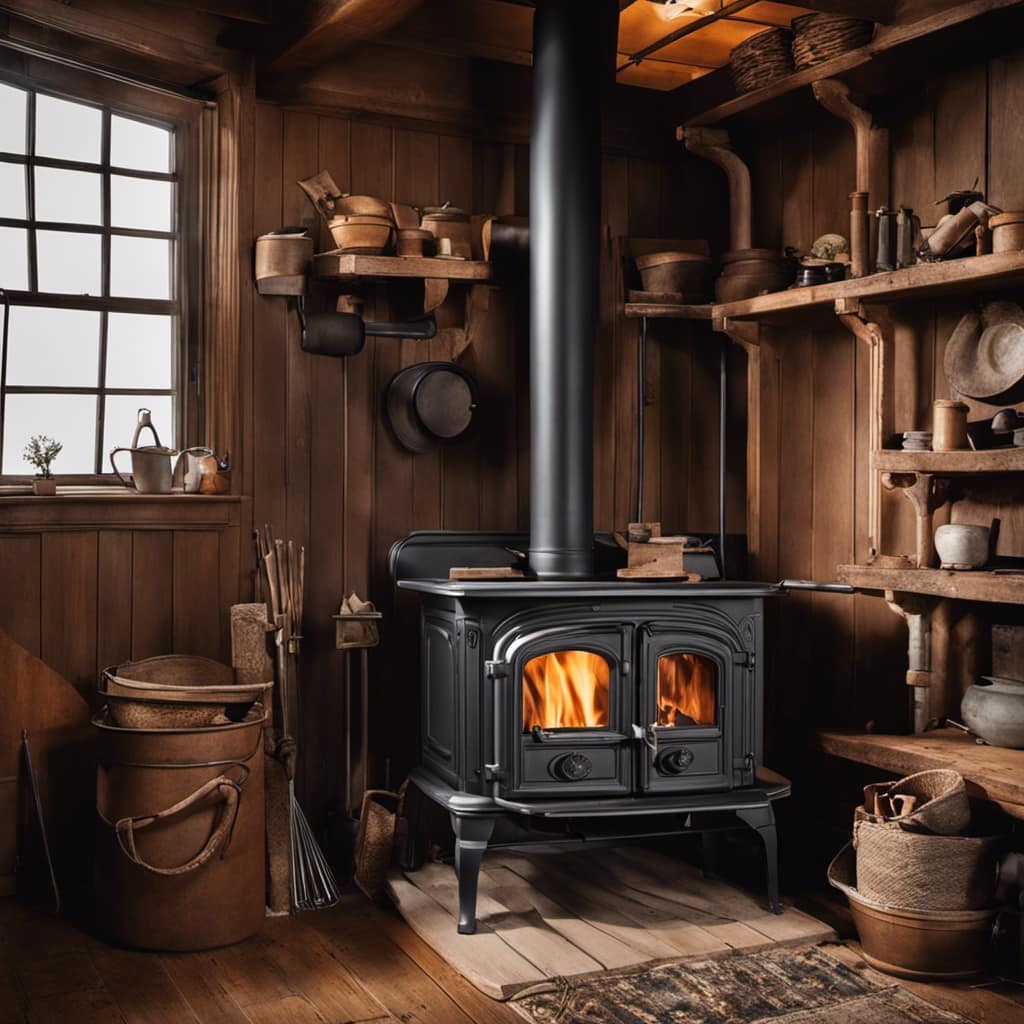
Can High Temperatures in a Wood Stove Cause Damage to the Surrounding Walls or Flooring?
High temperatures in a wood stove can indeed cause damage to the surrounding walls or flooring. I once had a stove that got so hot it scorched the nearby wallpaper. Safety precautions are crucial to prevent such incidents.
Are There Any Specific Safety Measures I Should Take to Ensure Safe Operating Temperatures for My Wood Stove?
When it comes to operating a wood stove, safety precautions are crucial. Temperature monitoring is key to prevent overheating and potential damage. I can share my knowledge and experience to help you ensure safe operating temperatures for your wood stove.
What Are the Potential Environmental Consequences of Operating a Wood Stove at Excessively High Temperatures?
Operating a wood stove at excessively high temperatures can have potential health risks and contribute to increased air pollution. It is important to maintain safe operating temperatures to minimize these environmental consequences.
Are There Any Specific Techniques or Tools That Can Help Me Control and Monitor the Temperature of My Wood Stove More Effectively?
I’ve found some techniques and tools that can help me control and monitor the temperature of my wood stove more effectively. It’s amazing how these simple tricks can make such a difference!
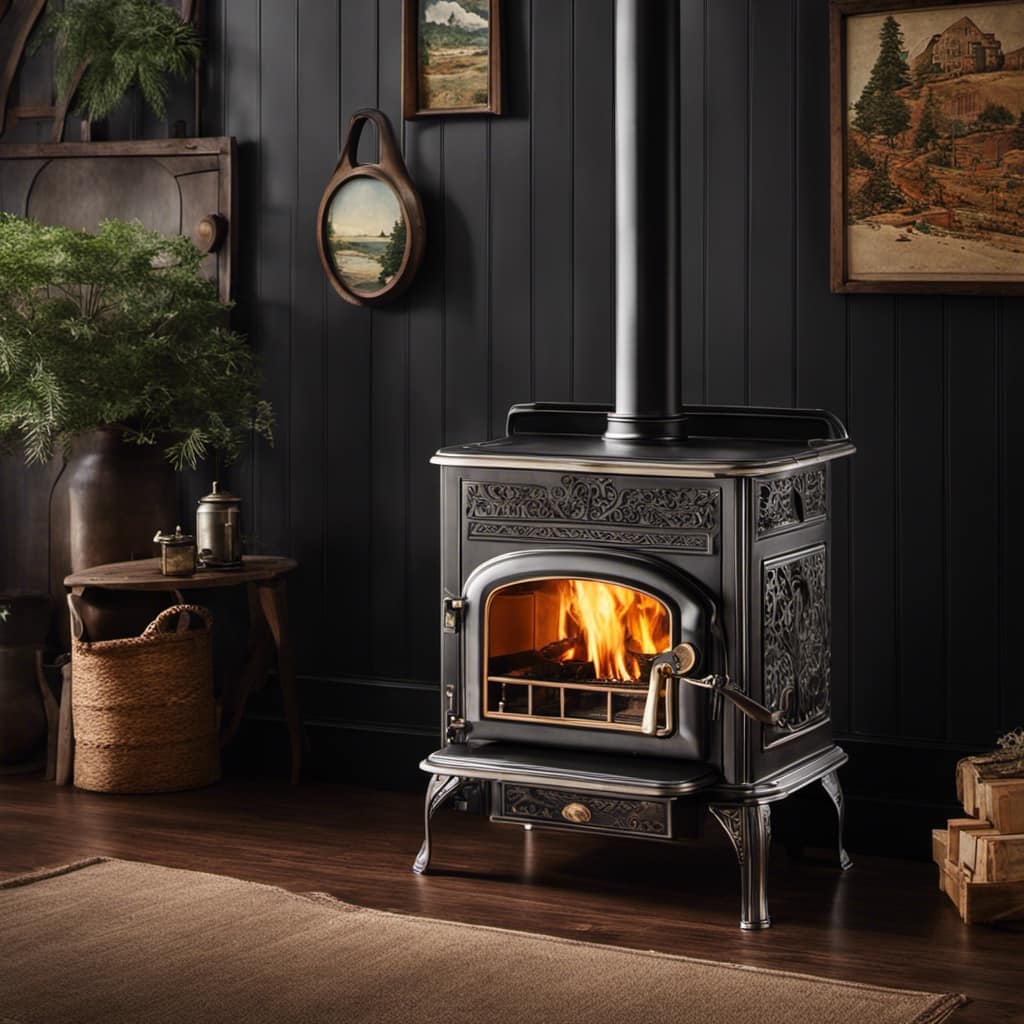
Conclusion
In conclusion, it’s essential to find the sweet spot in temperature for your wood stove to ensure optimal performance.
While it may be tempting to crank up the heat, excessive temperatures can negatively impact efficiency and even have environmental consequences.
By controlling and monitoring the temperature of your wood stove, you can maintain a safe and efficient operation.
So, remember to find the right balance and enjoy the cozy warmth while being mindful of the impact on both your stove and the environment.
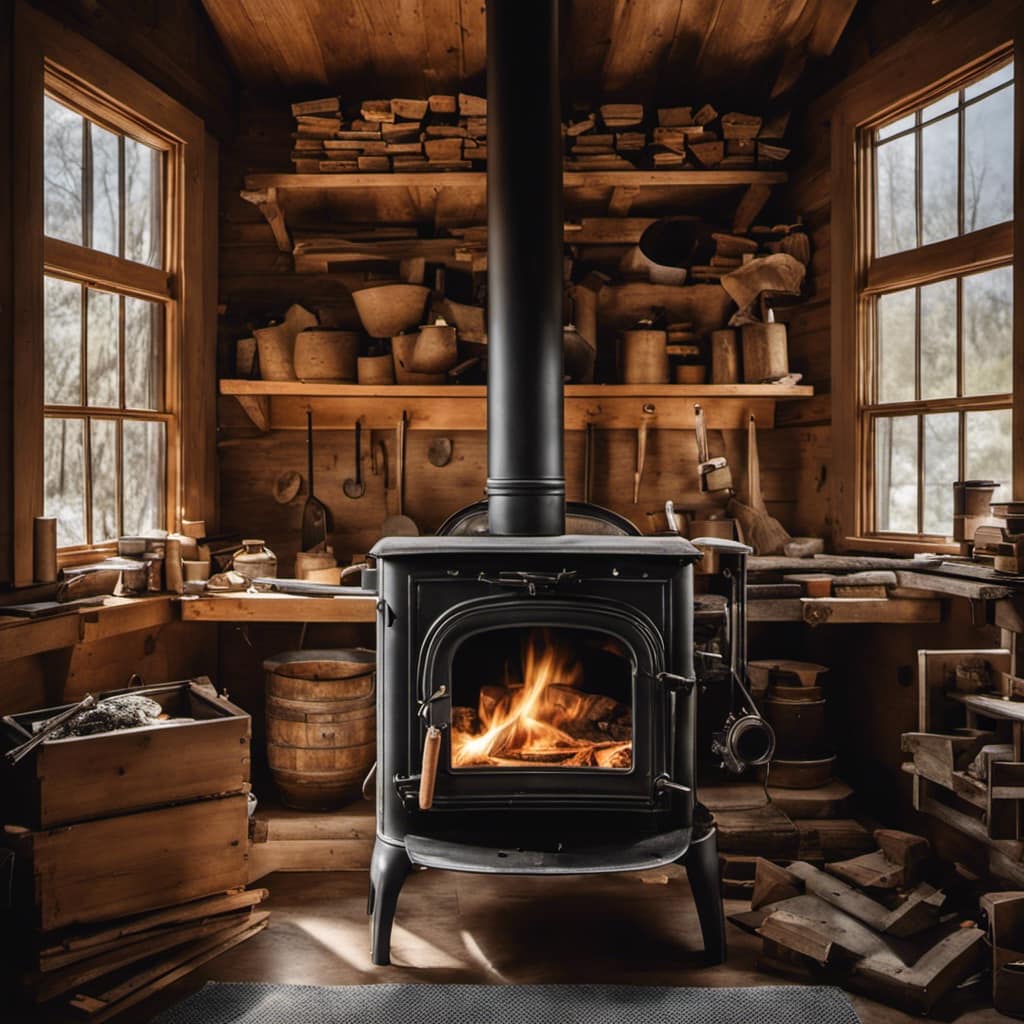
Growing up surrounded by the vast beauty of nature, Sierra was always drawn to the call of the wild. While others sought the comfort of the familiar, she ventured out, embracing the unpredictable and finding stories in the heartbeat of nature.
At the epicenter of every remarkable venture lies a dynamic team—a fusion of diverse talents, visions, and passions. The essence of Best Small Wood Stoves is crafted and refined by such a trio: Sierra, Logan, and Terra. Their collective expertise has transformed the platform into a leading authority on small wood stoves, radiating warmth and knowledge in equal measure.






